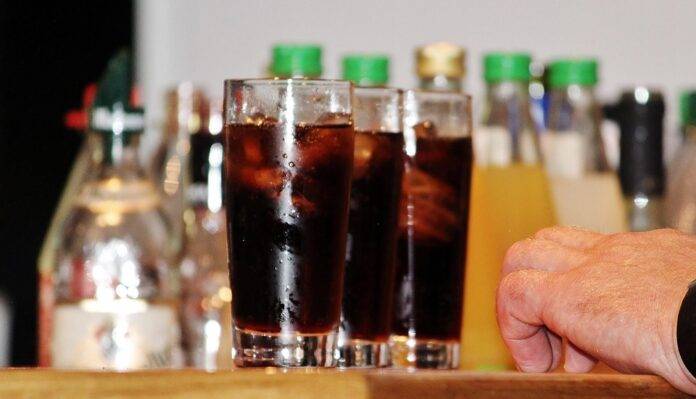Introduction
Carbonation is a key factor in determining the shelf life of carbonated beverages, impacting both the opening experience for consumers and the choice of packaging for manufacturers. In this report, we will delve into how carbonation affects these aspects, the financial implications for companies in the beverage industry, and the current trends in packaging choices influenced by carbonation levels.
Impact of Carbonation on Shelf Life
1. Chemical Reaction and Stability
Carbonation, which is the process of dissolving carbon dioxide gas into a liquid under pressure, plays a crucial role in the shelf life of carbonated beverages. The carbon dioxide gas acts as a natural preservative by lowering the pH level, which inhibits the growth of bacteria and other microorganisms that can spoil the product. This helps extend the shelf life of carbonated beverages compared to non-carbonated ones.
2. Effect on Flavor and Aroma
The presence of carbonation also affects the flavor and aroma of the beverage. The carbon dioxide gas creates bubbles that give the drink its characteristic effervescence, enhancing the overall sensory experience for consumers. However, over time, carbonation can dissipate, leading to a loss of fizziness and a flat taste. This can significantly impact the consumer’s perception of the product’s freshness and quality.
3. Packaging Considerations
To preserve carbonation and maintain the beverage’s quality throughout its shelf life, manufacturers must carefully consider the type of packaging used. Carbonated beverages are typically packaged in containers that can withstand the pressure of the carbon dioxide gas, such as glass bottles, aluminum cans, or PET plastic bottles. These materials help prevent gas leakage and maintain the desired level of carbonation until the product is consumed.
Opening Experience for Consumers
1. Carbonation Levels and Consumer Satisfaction
The level of carbonation in a beverage can greatly impact the opening experience for consumers. The right amount of carbonation creates a satisfying fizz and effervescence when the drink is opened, enhancing the overall enjoyment of the product. However, if the carbonation levels are too low or too high, it can affect the taste, mouthfeel, and overall experience for consumers.
2. Perception of Freshness and Quality
Consumers often associate carbonation with freshness and quality in beverages. The presence of bubbles and fizziness upon opening a carbonated drink signals to consumers that the product is fresh and has not gone flat. This perception of freshness can influence purchasing decisions and brand loyalty, making carbonation a crucial factor in the overall consumer experience.
Packaging Choices Influenced by Carbonation
1. Impact on Packaging Materials
The level of carbonation in a beverage can dictate the type of packaging material used by manufacturers. High levels of carbonation require packaging that can withstand the pressure exerted by the gas, such as aluminum cans or glass bottles with reinforced closures. On the other hand, beverages with lower carbonation levels may be packaged in PET plastic bottles or Tetra Pak cartons, which are less susceptible to gas leakage.
2. Sustainability Considerations
In recent years, there has been a growing emphasis on sustainability in the beverage industry, leading manufacturers to explore eco-friendly packaging options. Carbonation levels play a role in determining the sustainability of packaging choices, as certain materials may be better suited to maintaining carbonation and extending shelf life while minimizing environmental impact. Companies are increasingly investing in recyclable, biodegradable, and compostable packaging solutions to reduce their carbon footprint and appeal to environmentally conscious consumers.
Financial Implications for Beverage Companies
1. Production Costs and Efficiency
Maintaining the desired level of carbonation in beverages can impact production costs and efficiency for companies. The equipment needed to carbonate beverages, such as carbonation tanks and bottling lines, requires significant investment and maintenance. Moreover, ensuring consistent carbonation levels across batches can be challenging and may require additional quality control measures to meet consumer expectations.
2. Marketing and Branding Strategies
Carbonation levels can also influence marketing and branding strategies for beverage companies. The perceived freshness, quality, and sensory experience associated with carbonation can be leveraged in product positioning, packaging design, and advertising campaigns to attract and retain customers. Companies that successfully communicate the benefits of carbonation in their beverages can differentiate themselves in a competitive market and drive sales growth.
Overall, carbonation plays a vital role in determining the shelf life, opening experience, and packaging choices for carbonated beverages. Manufacturers must carefully balance carbonation levels to ensure product quality, consumer satisfaction, and financial performance. By understanding the impact of carbonation on these aspects, companies can make informed decisions that resonate with consumers and drive success in the beverage industry.
This report provides valuable insights into the relationship between carbonation and its effects on various aspects of the beverage industry, highlighting the importance of this key factor in shaping consumer preferences, packaging innovations, and business strategies.




